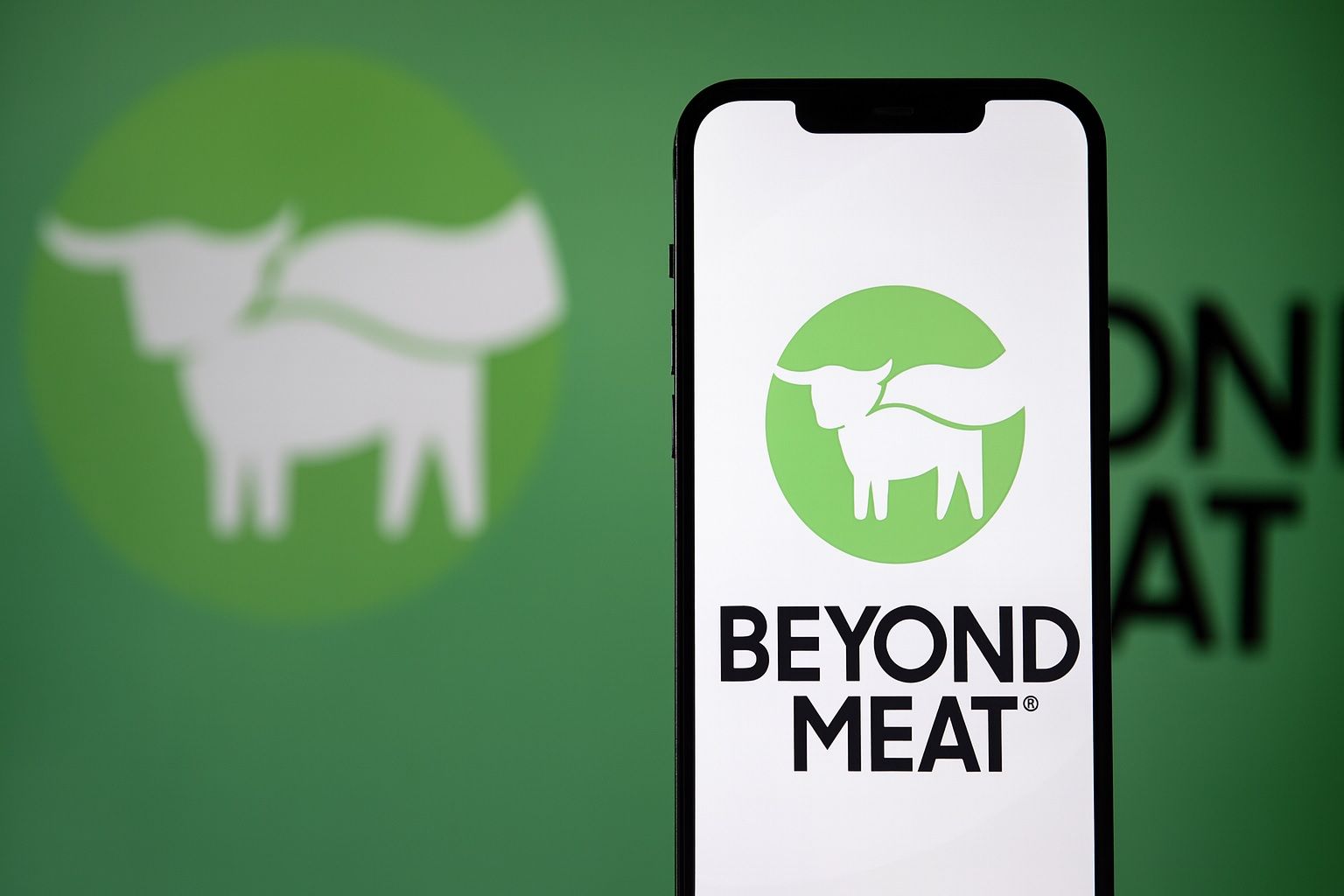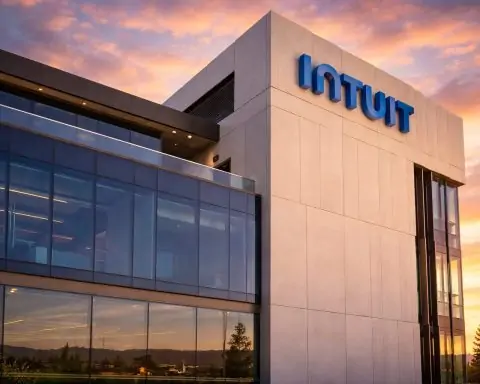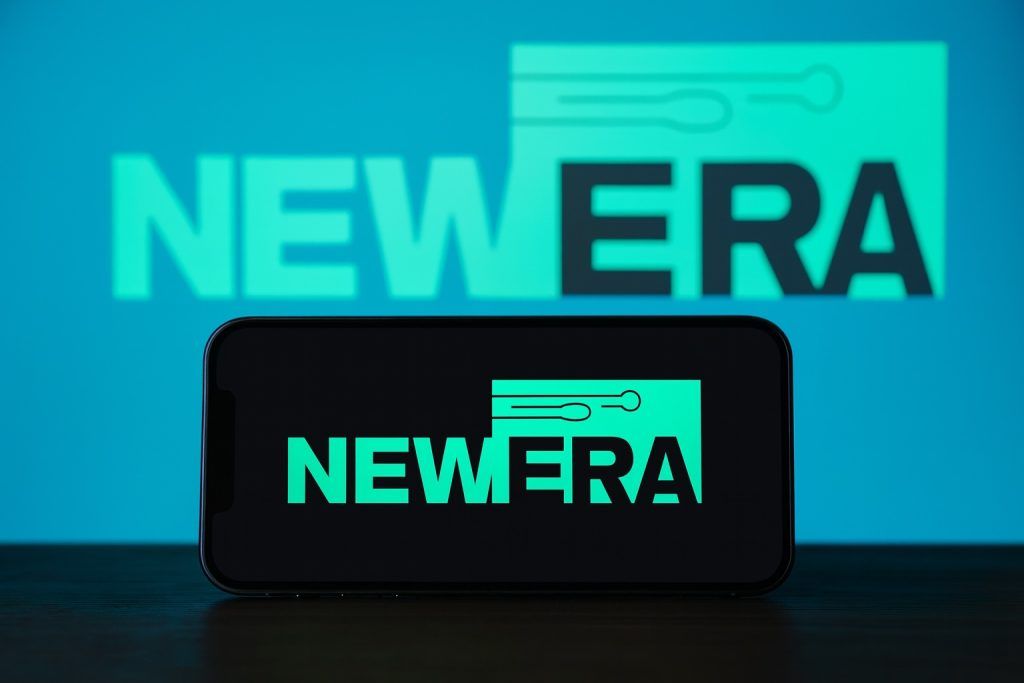Key Facts – October 18, 2025
- Penny-stock plunge: Beyond Meat’s stock price imploded this week – falling roughly 60% in one day – and traded under $1 for the first time ever after a controversial debt-swap deal wiped out shareholder value [1] [2]. BYND closed around $0.65 on Oct. 17, down ~97% from its $235 peak in 2019 [3].
- Massive dilution: Nearly 97% of Beyond Meat’s $1.15 billion in convertible notes were tendered for a swap, yielding $208.7 million in new 2030 notes and a staggering ~316 million new shares [4]. This quadruples the share count and sparked a shareholder panic over the “huge new share flood” about to hit the market [5].
- Lock-up expiry hits: Those 316 million new shares were locked up until Oct. 16 and began flooding the market on Oct. 17 [6] [7]. Investors braced for heavy selling once the lock-up lifted, fearing the surge in tradable shares would further pummel the already battered stock price.
- Board shake-up: Amid the crisis, founder/CEO Ethan Brown resigned from the board, along with at least two other directors [8]. In their place, new directors (including a bondholder representative) have been appointed [9]. Brown remains CEO, but the governance overhaul underscores the extreme measures taken to stabilize the company.
- Bleak Wall Street view: Analysts hold a “Strong Sell” consensus on BYND [10]. The median 12-month price target is only ~$3 [11] – barely above the current price. Some warn the company is in a “death spiral” of shrinking sales and high debt [12], and TD Cowen analysts cautioned of an “existential threat” unless Beyond Meat can reverse course [13].
- Financial woes mount: Sales are plunging and losses widening. Q2 2025 revenue fell ~20% YoY to $75 million (missing estimates) with a net loss of $33 million [14]. The company has burned ~$931 million in operating losses since 2021 [15]. Cash is down to about $117 million versus $1.2+ billion in debt [16], leaving a razor-thin cushion.
- Industry headwinds: Beyond Meat’s collapse comes as the plant-based meat market itself is stagnating. U.S. sales of meat alternatives fell 18% in revenue over two years [17] (unit volumes down 28%), with many cost-conscious consumers reverting to real meat. Competition is fierce too – Tyson Foods, Nestlé and Impossible Foods are crowding the space – and “Americans still overwhelmingly prefer the real thing” critics note [18].
Stock Nosedives into Penny Territory
Just a few years ago, Beyond Meat (NASDAQ: BYND) was a Wall Street darling; now it’s a penny stock cautionary tale. The company’s shares cratered below $1 this week after an early debt-restructuring announcement spooked the market. On Monday (Oct. 13), BYND opened around $0.84 – down nearly 60% from its prior close – following news of a drastic debt-for-equity swap [19]. By mid-week, the stock hit record lows in the $0.50–$0.60 range, and it closed Friday at roughly $0.65 [20]. This marks an astonishing fall from its 2019 IPO euphoria, when shares surged to an all-time high of $235 [21]. In 2025 alone, the stock has hemorrhaged value – down ~46% year-to-date as of Monday (before the latest plunge) [22], and now even more.
This meltdown stands in stark contrast to a broadly strong market. The S&P 500 is up about 14% in 2025 and the Nasdaq even more [23], yet Beyond Meat has been sinking for four straight years [24] [25]. The evaporation of investor confidence reflects both company-specific struggles and growing skepticism about the once-hyped plant-based meat industry.
Debt Swap Sparks Panic Selling
The immediate trigger for Beyond Meat’s collapse was an aggressive debt exchange deal unveiled in October. Facing a $1.15 billion convertible note coming due in 2027, the company struck a deal with bondholders to swap debt for equity. According to the terms, about 96.9% of the notes were tendered, and in an early settlement on Oct. 15 the company issued roughly $208.7 million of new 7% convertible notes due 2030 plus 316,150,176 new shares to those creditors [26] [27]. In one fell swoop, Beyond Meat slashed its debt load by over $900 million – but at the cost of massive dilution to shareholders.
Before this deal, Beyond Meat had only ~76.7 million shares outstanding [28]. The swap will more than quadruple the share count once all new stock is freely trading. “It’s a huge dilution bomb,” explained one analyst, noting that existing shareholders now own a much smaller slice of the company’s future profits (if any). Not surprisingly, the stock tanked on the news, plunging over 56% intraday on Oct. 13 [29] as investors reacted to the impending tsunami of shares.
Why the extreme move? Essentially, Beyond Meat bought time to avoid default. The deal pushes out debt maturity to 2030, easing pressure on its limited cash. “This marks a meaningful next step towards our goal of reducing leverage and extending debt maturity,” CEO Ethan Brown said of the settlement [30]. It’s effectively a bailout by bondholders: creditors agreed to take a haircut (accepting stock and new notes at a fraction of the original value) so the company can stay afloat. However, they demanded a steep price – equity control – leaving stock investors holding the bag.
New Shares Flood the Market
A key aspect of the swap was a short-term lock-up to prevent an immediate dump of new shares. Beyond Meat’s 316 million freshly issued shares were restricted until 5:00 pm on Oct. 16 [31]. After that, those holdings began to trickle (and then pour) into the public float on Oct. 17 [32]. Early indications suggest around 62–63 million of the new shares (about 37% of the issuance) became freely tradable right away on Friday [33], with the remainder likely to hit the market in stages.
This staged release did little to comfort investors – it merely staggered the pain. Thursday, Oct. 16 saw BYND shares drift in the mid-$0.50s as traders braced for the lock-up expiration [34]. By Friday, with tens of millions of new shares suddenly tradeable, selling pressure surged. Surprisingly, the stock bounced about +6% Friday to $0.65 [35] after an initial dip – a move some attributed to short-sellers covering positions. But the overhang is far from cleared. With hundreds of millions of additional shares due to hit the market, dilution remains a crushing weight on the stock. “Existing shareholders face a huge new share flood,” TS2.tech noted bluntly [36]. Many fear further declines as the float swells and any remaining optimism dries up.
Meanwhile, short sellers have piled on. Roughly 64% of BYND’s float is sold short [37] – among the highest of any U.S. stock – reflecting heavy bets that the share price will keep falling. This creates volatility (any hint of good news can spark a sharp short-covering rally), but so far the bears have been firmly in control.
Leadership and Board Overhaul
Beyond Meat’s turmoil is prompting leadership changes as well. In a surprise development, Ethan Brown – the company’s founder and CEO – resigned from the board of directors this week, along with at least two other board members [38]. This move was part of the debt agreement’s conditions to give bondholder representatives more governance influence. According to a securities filing, Alexandre Zyngier, an investor affiliated with the noteholders, has joined the board, and other new directors (Raphael T. Wallander and Joshua Murray) have been appointed to key committees [39]. The board shake-up suggests that creditors are now calling some shots, likely to ensure the company prioritizes financial discipline and debt repayment.
Brown remains as Chief Executive Officer, leading day-to-day operations, but stepping off the board indicates a willingness to cede some strategic control. It’s a dramatic shift – Brown was the visionary who took Beyond Meat public and evangelized plant-based protein’s potential. Now, with the company in financial straits, he’s effectively lost his boardroom seat. One departing director (Nandita Bakhshi) had been on Beyond’s board since before the IPO; her exit alongside Brown underscores a changing of the guard.
Internally, management is in crisis mode. Beyond Meat has been slashing costs for over a year – including multiple rounds of layoffs and even scaling back ambitious projects – in a bid to stem the bleeding. “We took it on the chin in 2025, but remain undeterred and truly excited about our future,” Brown insisted earlier, highlighting efforts to cut expenses and streamline production [40]. The company aims to reach EBITDA break-even by 2026 through aggressive cost management [41]. Skeptics note that goal may be too little, too late, but it’s clear that drastic measures are underway both in the boardroom and on the factory floor.
Analysts: “Strong Sell” – Skepticism Abounds
On Wall Street, sentiment around Beyond Meat is overwhelmingly negative. Of the few analysts still covering the stock, none recommends buying at present. In fact, the consensus rating is a “Strong Sell,” and 6 out of 9 analysts have outright Sell ratings (the rest say Hold) [42]. Price targets tell the story: the median 12-month target is about $3 [43], which paradoxically is several times the current share price but still implies a company worth only ~$200 million (peanuts compared to its multi-billion valuation just a few years ago). The highest analyst target is a mere $4 [44] – a far cry from the glory days, and a sign of how little optimism remains.
Some analysts have not minced words. TD Cowen warned in August that Beyond Meat faces an “existential threat” to its business if it cannot stabilize declining sales and conserve cash [45]. They credited management for finally recognizing the severity of the situation and taking steps like the debt swap, but nonetheless urged investors to sell, citing “too much risk” in the company’s fragile finances and weak demand outlook [46]. Others have described Beyond’s downward spiral as potentially terminal – a note from another firm painted the company as being in a “death spiral” of eroding demand, high costs and now massive dilution [47].
Bearishness is also evident in the market itself. Institutional investors (who own about 52% of BYND’s shares [48]) have mostly been trimming positions; many big funds that once cheered Beyond Meat’s mission have quietly walked away. Insiders have sold over $100 million in stock since 2020, cashing out options even as the share price collapsed [49] – hardly a vote of confidence. And on social media forums frequented by retail traders, Beyond Meat is often cited as a “cautionary tale” of hype gone wrong [50]. In short, sentiment is as low as the stock price. Any bulls left are either extremely contrarian or betting on a speculative turnaround play rather than fundamentals.
Deepening Financial Troubles
Underpinning all of this is Beyond Meat’s deteriorating financial health. The company’s sales have been shrinking and losses mounting, raising serious questions about its viability if trends don’t improve. In the second quarter of 2025, revenue plunged to $75.0 million, down ~19.6% year-over-year, missing analysts’ expectations of ~$83–84M [51]. The quarterly net loss widened to about $33.2 million [52], and gross profit margins remained dismally low (just 11.5% in Q2) [53]. Beyond Meat has never turned an annual profit since its 2019 IPO, and its losses accelerated as growth stalled. From 2021 through 2024, the company racked up roughly $931 million in cumulative operating losses [54] – nearly a billion dollars burned trying to conquer the fake-meat market.
This red ink has left the balance sheet in rough shape. As of mid-2025, Beyond Meat had only about $117 million in cash on hand against a debt load north of $1.2 billion [55]. In fact, prior to the recent debt exchange, the company faced a real chance of running out of cash in the next year, given it was bleeding tens of millions each quarter. Ratings agency Moody’s sounded alarms in September about the high leverage and thin liquidity buffer [56]. Unsurprisingly, Beyond Meat withdrew its full-year 2025 guidance back in May, citing “an elevated level of uncertainty” in the business [57]. Translation: management could no longer forecast results confidently, a red flag that sent investors running.
The completion of the debt swap does improve some metrics – interest expense will be lower going forward, and the company’s debt-to-equity ratio improves on paper. But dilution has largely offset those gains in the eyes of equity holders. Now, instead of facing a debt maturity crisis in 2027, Beyond Meat faces a growth and profitability crisis: can it stop the revenue decline and stem the cash burn before the new debt comes due? If not, the recent maneuver might simply be kicking the can down the road.
Plant-Based Meat: From Fad to Fade?
Beyond Meat’s struggles are partly symptomatic of a broader slowdown in the plant-based protein sector. After a meteoric rise in the late 2010s, interest in meat alternatives has cooled significantly. Industry sales are shrinking: the U.S. plant-based meat market saw an 18% drop in dollar sales from 2021 to 2023 [58], per a Good Food Institute report, and a 28% collapse in unit volumes as many curious customers tried products like Beyond Burgers but didn’t become regular buyers. Globally, growth has stalled too – one analysis found retail sales of plant-based meat fell ~7% in 2024 [59].
The reasons are multifold. Consumer tastes have shifted back toward traditional animal protein, especially as pandemic-era novelty wears off. “Animal meats are in, in true cyclical fashion… we happen to be on the other side of the moment,” Ethan Brown admitted in an August call [60], noting that cultural “sizzle” around vegan meat has diminished. At the same time, economic pressures (inflation, tighter budgets) made shoppers less willing to pay a premium for faux meat. Beyond’s products are often significantly pricier than real meat – by roughly 80% on average, according to industry research – which became a tougher sell as inflation pinched wallets. And while early adopters found the plant-based burgers decent, a sizable portion of consumers still find the taste or texture lacking, or are turned off by the perception that these are “ultra-processed” foods rather than healthy whole foods [61].
Competition has also intensified. Impossible Foods, a key rival, remains private but has gained grocery market share and scored the Burger King Whopper partnership that keeps its brand visible [62]. Large food conglomerates like Nestlé (with its Sweet Earth and Garden Gourmet lines) and Tyson Foods (which launched Raised & Rooted) have deeper pockets and existing distribution to push their plant-based offerings. Even traditional veggie brands (e.g. Kellogg’s MorningStar Farms) have upped their game. Beyond Meat, once nearly synonymous with “plant-based burger” in the public’s mind, now faces a crowded field fighting over a pie that, for now, isn’t growing. As one Quartz piece put it, “Americans still overwhelmingly prefer the real thing” when it comes to meat [63] [64].
Still, it’s not all doom and gloom for alternative protein. Surveys show a rising number of “flexitarian” consumers – people looking to reduce (not eliminate) meat intake – for health or sustainability reasons [65]. Nearly half of global consumers identify as flexitarian in some form [66]. This suggests a long-term undercurrent of demand that could benefit companies like Beyond Meat if they can adapt. Innovations are continuing as well, from blended meat-plant products to improved recipes that aim to narrow the taste and price gap. Beyond Meat itself has touted a new, reformulated Beyond Burger that it claims is its best ever, and it’s banking on that to rekindle consumer interest (early tests got positive feedback on social media, Brown said). The company also inked a multi-year agreement in 2021 to supply McDonald’s with the McPlant patty for certain markets [67] – a partnership that, if expanded, could be a game-changer (though so far McPlant has been a limited pilot).
In short, the hype bubble of plant-based meat has deflated, but the category isn’t dead. It’s transitioning from fad to a more modest growth trajectory. Whether Beyond Meat can survive this transitional period is the big question.
Outlook: Can Beyond Meat Be Saved?
Looking ahead, Beyond Meat faces steep challenges – but also a small window to turn things around. Thanks to the debt restructuring, the company likely has at least a year or two of breathing room (with reduced debt payments) to try and execute a comeback plan. The next major milestone is the Q3 2025 earnings report on November 5. Investors will be watching closely for any signs of stabilization: Have sales declines eased? How much cash is left after recent events? Is management revising its strategy? According to LSEG forecasts, full-year 2025 revenue is still expected to fall roughly 14% to about $282 million [68] – a grim picture, though any improvement on that outlook or more optimistic guidance for 2026 could help sentiment. Conversely, another quarter of double-digit sales decline could reinforce fears of a prolonged “death spiral” [69].
Market sentiment at this point implies a high chance of failure – but also the potential for outsized gains if Beyond Meat manages even a modest recovery. At ~$0.65 per share, the bar is extremely low. Bulls argue that with the stock beaten down to a $30–40 million market cap (adjusting for new shares, the effective market cap is larger, but still under $200M), a lot of bad news is already priced in. They point to Beyond Meat’s strong brand recognition and distribution (products are still in over 65 countries and 130,000 retail and foodservice outlets worldwide [70]) as assets that could be leveraged in a turnaround. If the company can find a way to reignite growth – perhaps through innovation (e.g. new products like plant-based steak or jerky), strategic partnerships, or tapping into the high-protein diet trend – the stock could bounce from these distressed levels. Even a return to $3 (the average analyst target) would quintuple the price from ~60¢, illustrating the lottery-ticket appeal for some speculative investors.
However, the bear case remains formidable. Beyond Meat’s fundamental problem is shrinking demand for its core products coupled with a cost structure that was built for much higher volumes. Unless it dramatically cuts expenses or finds new revenue streams, the company could keep bleeding cash. The dilutive debt swap fixed the immediate solvency issue but left shareholders diluted and demoralized. If the share price stays depressed, it may be hard for Beyond Meat to raise fresh equity capital without almost zeroing out existing holders. In a worst-case scenario, continued declines in sales could force further restructurings or even raise bankruptcy risks down the line (though management insists it’s not heading that way).
In the near term, volatility is likely to persist. The huge short interest might fuel sharp bear-market rallies on any glimmer of good news – for instance, an unexpected jump in grocery sales or rumors of a buyout could send BYND spiking temporarily as shorts cover. But sustaining an upward trajectory will require concrete evidence that Beyond Meat can stop its financial bleeding.
As of now, caution prevails. “Wall Street and Main Street alike view Beyond Meat as a cautionary tale,” noted TS2.tech, reflecting on how a one-time superstar stock has fallen from grace [71]. The broader market is thriving and even many food industry stocks are near highs, yet Beyond Meat is fighting for its life. For investors and observers, the company’s journey from a $10B plant-protein pioneer to a sub-$1 stock is a stark reminder of how quickly market sentiment can change. Beyond Meat’s prospects now hinge on whether it can adapt and survive in a leaner, more skeptical environment. The coming months – starting with the November earnings and holiday sales season – will be crucial in determining if this embattled company can move beyond its current woes, or if it truly is, as some fear, “beyond saving.” [72]
Sources: Recent company filings and press releases [73] [74]; financial news reports (Reuters, Los Angeles Times, Bloomberg, Yahoo Finance) [75] [76] [77]; TS2.tech analysis and industry data [78] [79]; market data from Nasdaq and Markets Insider [80]. All information is current as of Oct. 18, 2025.
References
1. ts2.tech, 2. www.latimes.com, 3. www.latimes.com, 4. ts2.tech, 5. ts2.tech, 6. ts2.tech, 7. ts2.tech, 8. www.streetinsider.com, 9. www.streetinsider.com, 10. ts2.tech, 11. ts2.tech, 12. ts2.tech, 13. www.reuters.com, 14. ts2.tech, 15. ts2.tech, 16. ts2.tech, 17. www.latimes.com, 18. ts2.tech, 19. ts2.tech, 20. markets.businessinsider.com, 21. www.latimes.com, 22. www.reuters.com, 23. ts2.tech, 24. www.reuters.com, 25. www.reuters.com, 26. www.reuters.com, 27. www.streetinsider.com, 28. www.reuters.com, 29. ts2.tech, 30. ts2.tech, 31. ts2.tech, 32. ts2.tech, 33. ts2.tech, 34. ts2.tech, 35. markets.businessinsider.com, 36. ts2.tech, 37. www.reuters.com, 38. www.streetinsider.com, 39. www.streetinsider.com, 40. ts2.tech, 41. ts2.tech, 42. www.reuters.com, 43. ts2.tech, 44. ts2.tech, 45. www.reuters.com, 46. www.reuters.com, 47. ts2.tech, 48. ts2.tech, 49. ts2.tech, 50. ts2.tech, 51. ts2.tech, 52. ts2.tech, 53. ts2.tech, 54. ts2.tech, 55. ts2.tech, 56. ts2.tech, 57. www.reuters.com, 58. www.latimes.com, 59. ts2.tech, 60. www.latimes.com, 61. ts2.tech, 62. www.latimes.com, 63. ts2.tech, 64. ts2.tech, 65. ts2.tech, 66. ts2.tech, 67. ts2.tech, 68. www.reuters.com, 69. ts2.tech, 70. ts2.tech, 71. ts2.tech, 72. www.reuters.com, 73. www.streetinsider.com, 74. www.streetinsider.com, 75. www.reuters.com, 76. www.latimes.com, 77. www.reuters.com, 78. ts2.tech, 79. ts2.tech, 80. markets.businessinsider.com







